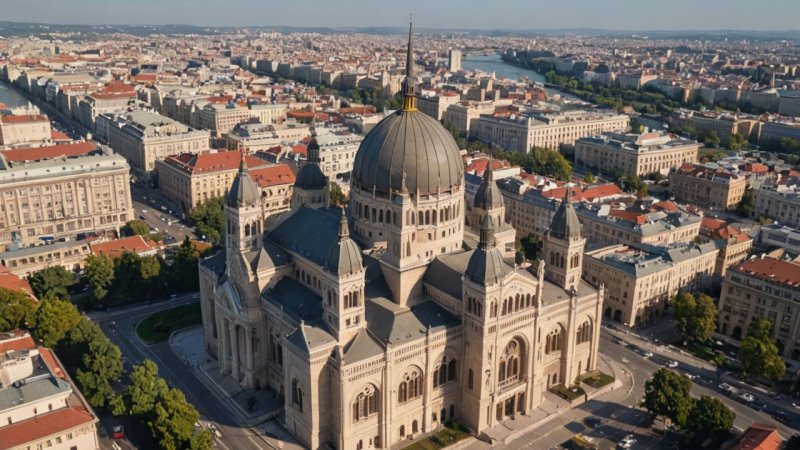The Great Synagogue of Budapest, also known as the Dohany Street Synagogue, is a magnificent structure that represents the rich cultural and religious history of Hungary's Jewish community. However, it is not the only landmark of its kind in Budapest. In this article, we’ll explore the differences between the Great Synagogue and other notable synagogues in Budapest, highlighting their unique features, historical significance, and visitor experiences.
Historical Background
The Great Synagogue of Budapest, built between 1854 and 1859, is the largest synagogue in Europe and the second largest in the world. Designed in a Moorish Revival style by architect Ludwig Förster, it was commissioned by the Neolog Jewish community. Its striking façade and grand interiors reflect the prosperity of the Jewish community in Hungary during the 19th century.
In contrast, the Dohany Street Synagogue, although often used interchangeably with the Great Synagogue, also refers to the broader area that includes the Jewish Museum and the Holocaust Memorial. The Dohany Street Synagogue has a rich history that is intertwined with the Jewish experience in Budapest, particularly during the turbulent times of World War II.
Architectural Features
The architectural grandeur of the Great Synagogue is one of its most significant highlights. The building features a stunning blend of Gothic, Moorish, and Byzantine architectural styles, with a strikingly colorful interior that includes intricate stained glass windows and beautiful wooden carvings.
On the other hand, the nearby Kazinczy Street Synagogue, built in the early 20th century, showcases a more modern Art Nouveau style. While it may not be as grand as the Great Synagogue, it offers an intimate atmosphere and a unique aesthetic that appeals to visitors seeking a different perspective on Jewish architecture.
Visitor Experience
Visiting the Great Synagogue is a profound experience, as it typically includes a guided tour that delves deep into the synagogue's history, architecture, and the Jewish community's contributions to Hungarian culture. The tour often features visits to the Jewish Museum and the Memorial Park, which holds a poignant memorial to the victims of the Holocaust.
In contrast, the Kazinczy Street Synagogue offers a more personal experience, with fewer crowds and a serene environment. Visitors often appreciate the opportunity to engage with the local community, participate in Shabbat services, or attend cultural events that celebrate Jewish traditions.
Significance and Symbolism
The Great Synagogue is more than just a house of worship; it stands as a symbol of resilience and survival for the Jewish community in Hungary. It serves as a reminder of the rich heritage that has persisted despite the challenges faced throughout history. The Holocaust Memorial, adjacent to the synagogue, further emphasizes this theme of remembrance and resilience.
Conversely, the Kazinczy Street Synagogue symbolizes a more modern approach to Jewish life in Budapest. It represents a community that has adapted and evolved, maintaining traditions while embracing contemporary culture. This synagogue often serves as a hub for younger generations, fostering a vibrant Jewish community in the heart of Budapest.
Accessibility and Location
Located in the bustling Jewish Quarter, the Great Synagogue is easily accessible by public transportation and is situated near various attractions, making it a convenient stop for tourists. However, due to its popularity, it can often be crowded, particularly during peak tourist seasons.
The Kazinczy Street Synagogue, while also centrally located, tends to be less frequented by tourists, which allows for a more peaceful visit. Its location in a quieter area provides a respite from the hustle and bustle of the city, making it an ideal place for reflection and contemplation.
Conclusion
Both the Great Synagogue of Budapest and the Kazinczy Street Synagogue offer unique experiences that reflect the rich tapestry of Jewish history and culture in Hungary. The Great Synagogue is a must-see for its monumental architecture and historical significance, while the Kazinczy Street Synagogue provides a more intimate and modern perspective on Jewish life. Depending on your interests—whether you're drawn to grand historical landmarks or smaller community-focused experiences—each synagogue offers something special to the visitor. Ultimately, visiting both can provide a comprehensive understanding of the Jewish heritage in Budapest, showcasing the resilience and vibrancy of this community throughout the ages.






